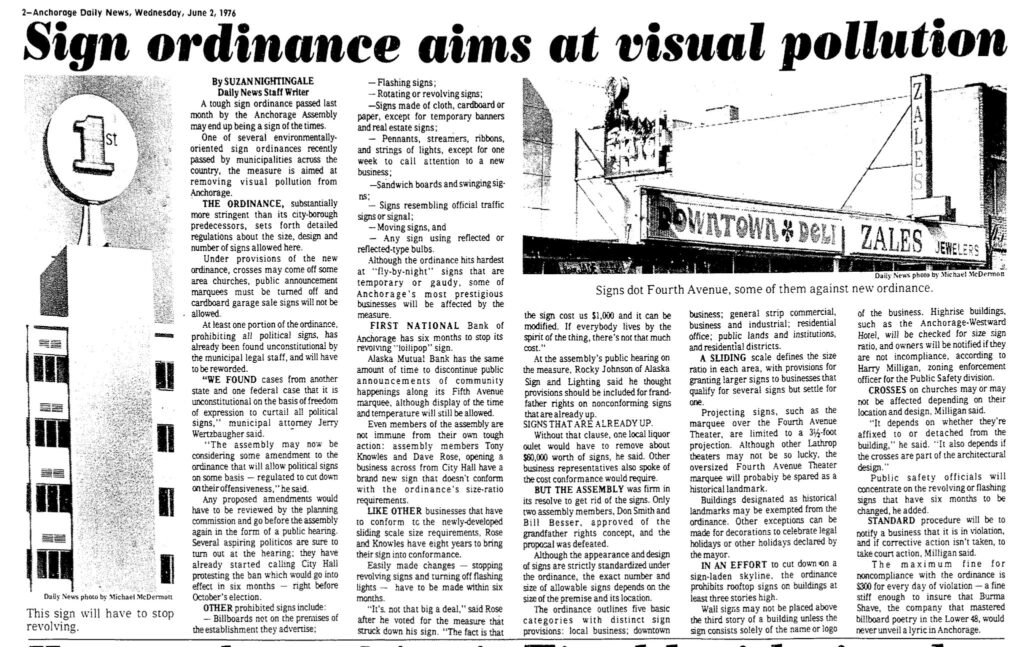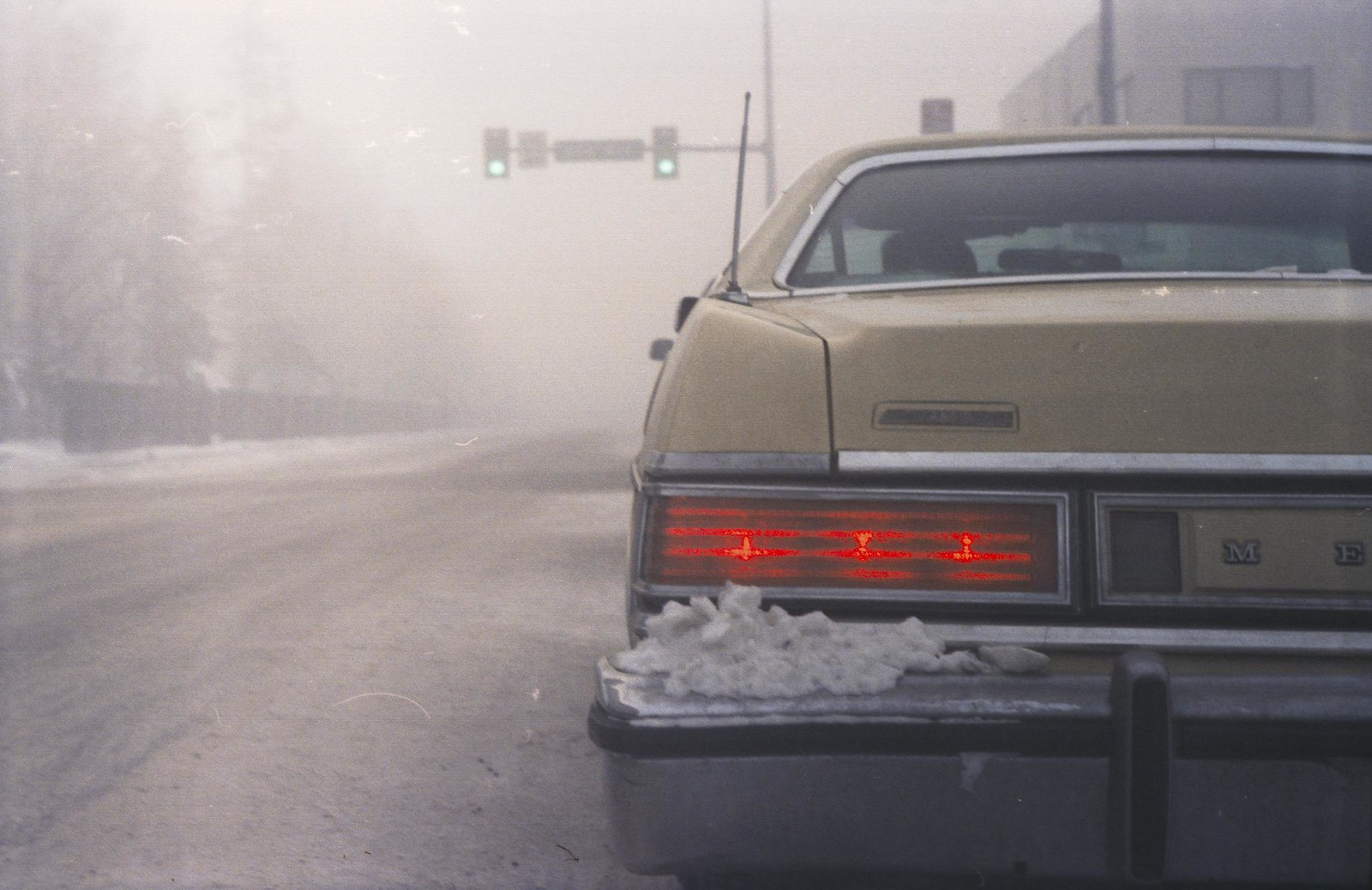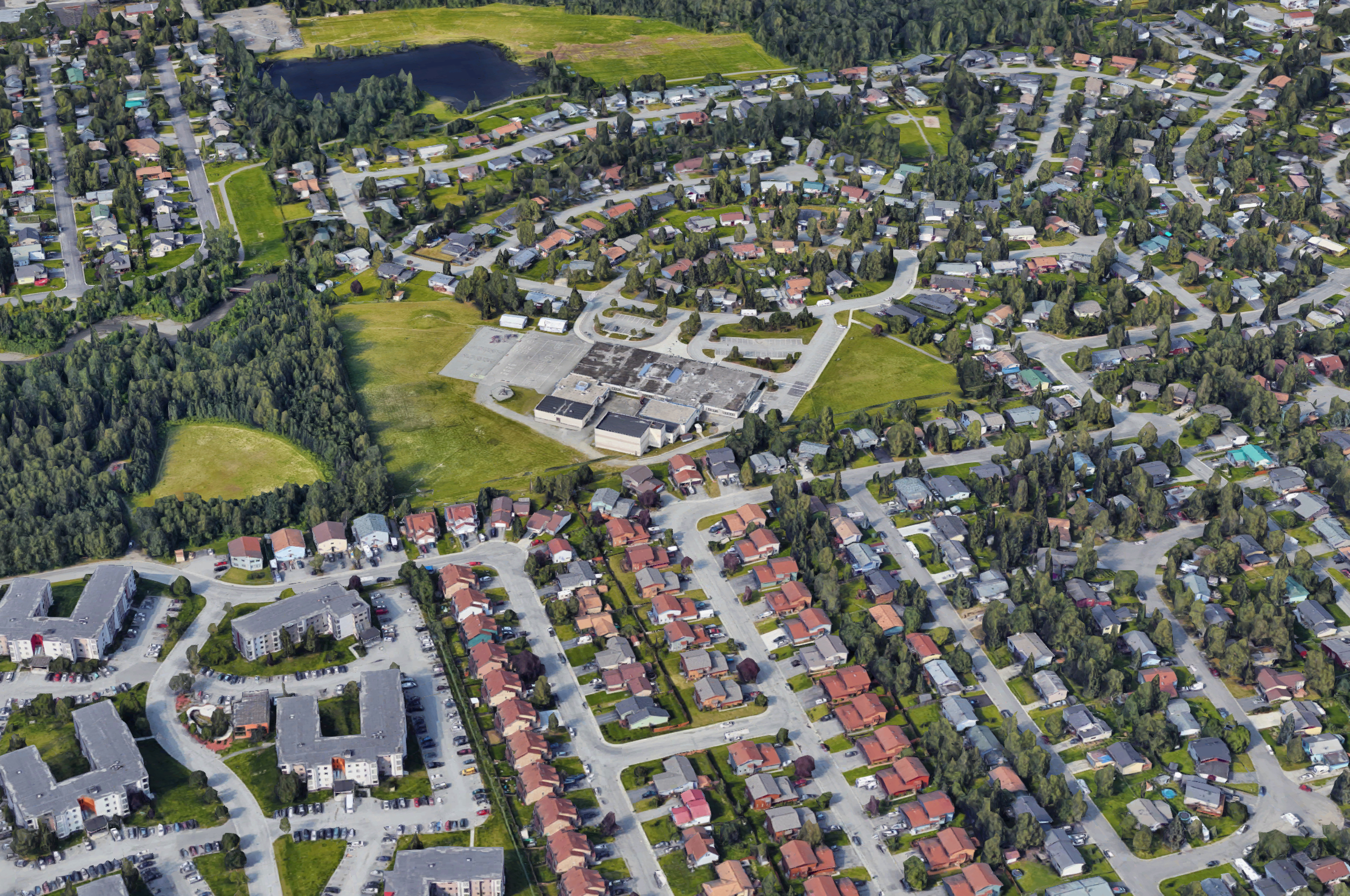Enter the beige
Did a regressive sign ordinance in the 1970s usher in Anchorage’s beige phase?
In 1976, Anchorage was one of the fastest-growing cities on the West coast. The city was flush with oil money, and the crash of the late ’80s was nowhere in sight. Business was booming, and it seemed there was nothing we could do to slow Anchorage’s transformation into a full-blown city with its unique vibe – A vibe that some people (apparently) felt was tacky or even seedy.
As a result of the oil boom, Anchorage had an influx of single men with disposable income, so businesses that catered to them in many ways sprang up all over town.

The war on visual pollution
In what I suspect was an attempt to deliver a blow to the adult entertainment venues, the Anchorage Assembly passed a new sign ordinance that effectively transformed an electric albeit seedy, neon Anchorage into a more subdued version of its (still) seedy self.
This is a classic example of using zoning ordinances as a broad-based attack on an undesirable element rather than taking specific action against the most egregious offenders. Essentially, cutting off your nose to spite your face.

The ordinance, primarily unchanged today, prohibits:
Flashing, moving, animated, coursing, blinker, racer-type, intermittent, moving, or revolving signs.
Roof signs except for signs with no more than 20 percent of the actual sign area extending no more than 20 percent of the building height above the roof or parapet wall.
Passing this ordinance forced businesses to take down signs suddenly out of compliance, many of which weren’t strip clubs, brothels, or even bars. Notable examples were the First National Bank of Anchorage’s revolving “1st” rooftop sign and Holiday Inn’s massive atomic neon sign. The landmark 4th Avenue Theater received a historic variance but, the ordinance would prohibit any future signs of similar characteristics: big lighted signs. If you’ve ever wondered why the PAC doesn’t have a marquee, it’s because of this ordinance.
Enter the Beige
The assembly succeeded in enacting zoning dominion over the dens of sin and debauchery, most of which have been out of business for decades. Was this ordinance about morality and censorship? or was it purely aesthetics? As a child of Anchorage in the ’80s, I still have the Crazy Horse radio jingle burned into my memory. Just because the adult book store had a small(er) sign that didn’t blink doesn’t mean I was oblivious to it. Did losing iconic, irreplaceable signage justify the victory over the visual pollution from a handful of establishments, and were any of them really that bad?
The following decade saw the most subdued and uninteresting developments of all time. Its effects are still prominent today, giving rise to a popular social media critique of Anchorage aesthetics called Keep Anchorage Beige. The “color” beige was popular during this time, but beige is also a feeling and representation of the mood. Did the sign ordinance quash tacky creativity and vibrancy and usher in an era of austerity?
Post-Beige
Downtown Anchorage lacks any exciting lighting or signage despite the “city of lights and flowers” tagline of the ’90s. We only allowed the 4th Avenue Theater sign to stay and it’s been shut off for years already – (I would like to give a nod to ADP’s lighted canopy over E Street, it’s excellent).
If the sign ordinance of ’76 had failed, maybe Anchorage of today would be boasting a “post-sin city” eclectic vibe similar to Reno which has seen a strong comeback in the past decade. We learned to celebrate Spenard’s colorful history and even managed to save the neon palm tree, an icon of the era which I hope to see returned to the neighborhood soon.
Nobody wants to see the highways and rooftops lined with billboards for personal injury attorneys. Still, I’d encourage exploring ways of amending the ordinance to bring some color and creativity to our dark winter landscape (if anyone is willing to build it). Maybe we could bring back the “Anchorage, All-American City” neon sign over 4th Avenue or at least look into giving a variance to the PAC for a marquee on the bare concrete walls of 5th Avenue?



